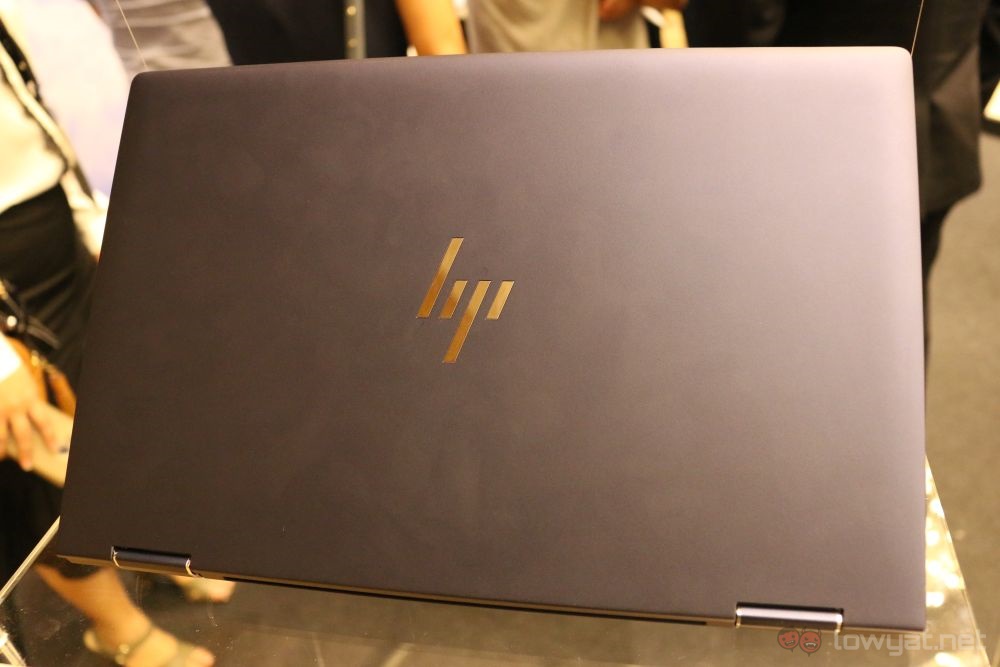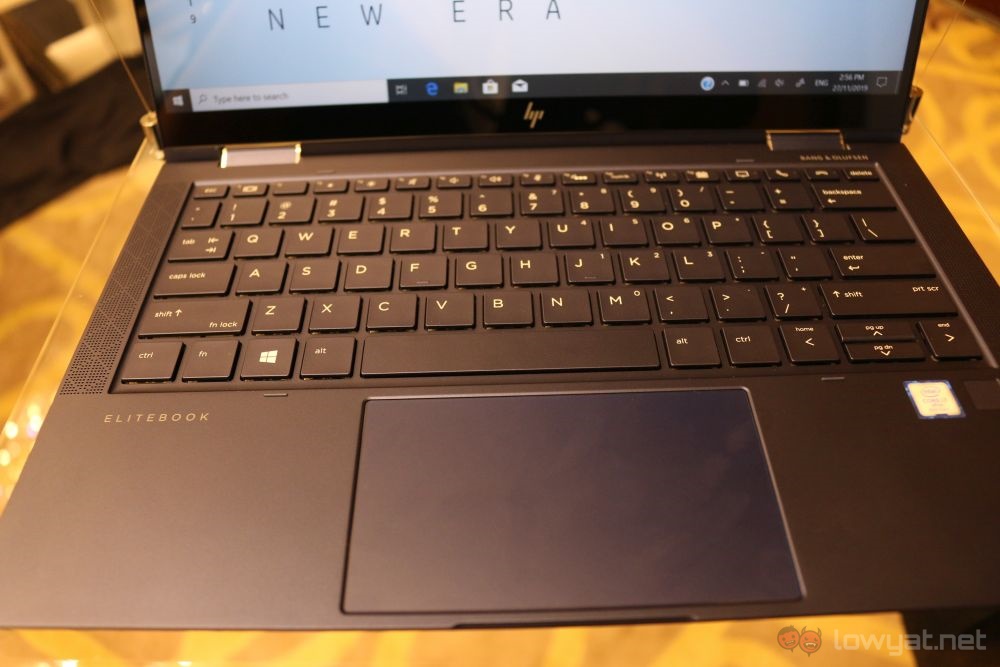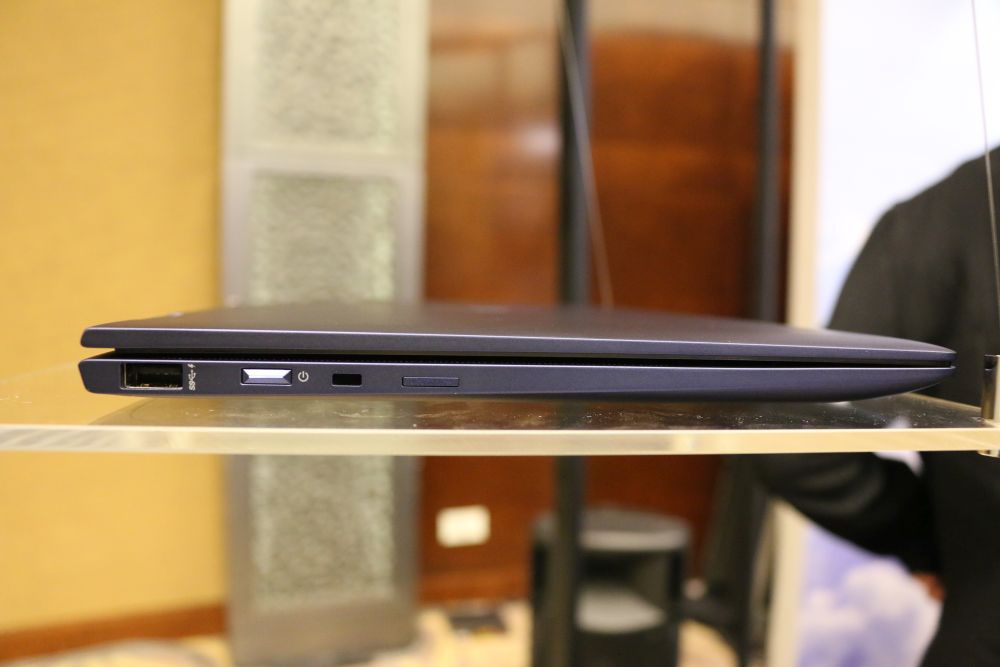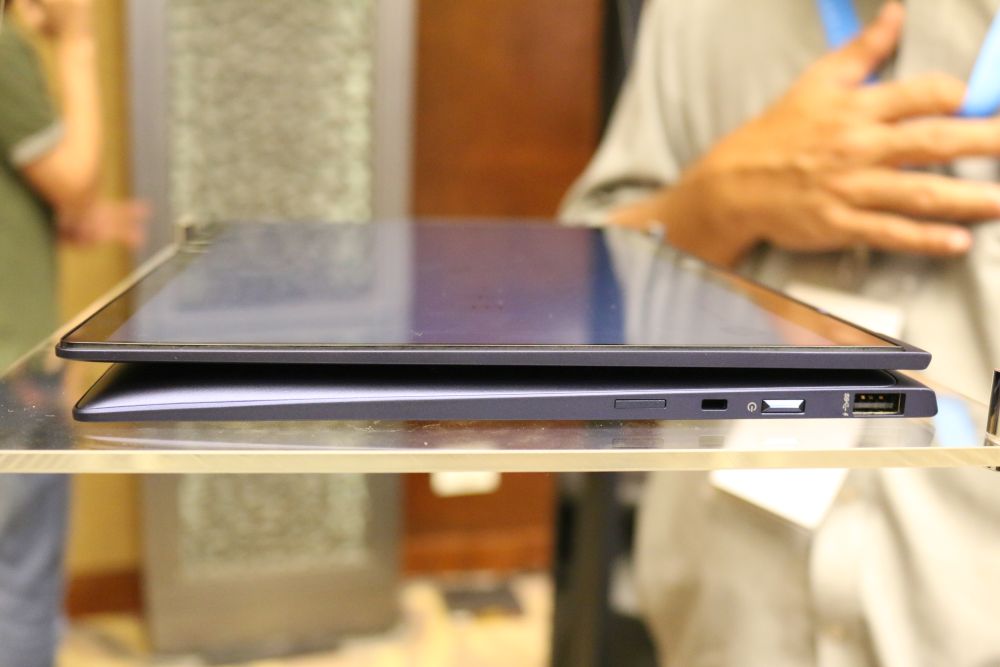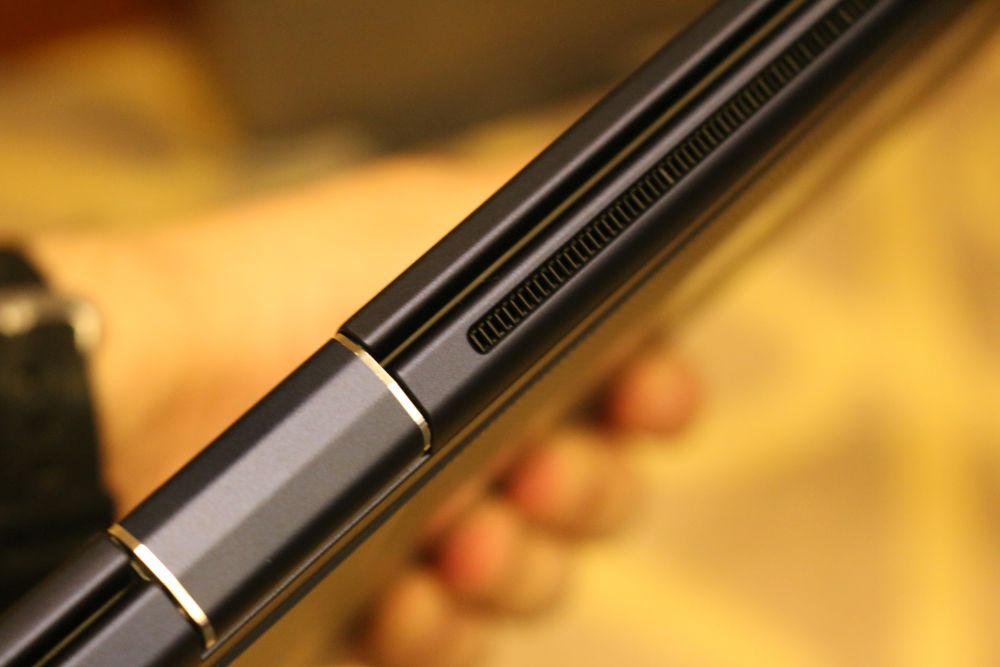One of the first things you’ll notice about the laptop is the ease in which it is to lift. While I couldn’t tell for sure if it really weighs under 1kg, I’m inclined to believe it. That said, the lightness does pose an issue of its own. And it’s something you’ll experience whenever you need to use the laptop after you’ve taken it out of your bag – lifting the lid.
The HP Elite Dragonfly, like many other laptops, have their lids designed to allow you to flip them open with a finger. This ends up being impossible most of the time, simply because the Dragonfly is too light. But because it’s a convertible, the hinges of the Dragonfly also has to be rigid in order to support the tent and stand modes that it may be used in. That said, the Dragonfly transitions smoothly from one mode to another, despite the rigidity felt when you flip the lid open. Speaking of convertible, this naturally means that the Dragonfly comes with a touchscreen. It’s accurate and responsive, meaning when you get used to it, you’ll definitely be relying on it more than you would the mousepad. The mousepad itself is not too bad, actually. It’s responsive and accurate enough that it will get the job done without frustrating you in the process.
But then we get to the keyboard. In stark contrast to the smooth moving hinge, the keyboard feels quite stiff instead. You’ll need to exert an unexpected amount of force to push the keys down. It’s not like you’ll end up with sore fingers after a long typing session, but it’s still a stark contrast compared to the rest of the laptop. Flanking the keyboard are the speakers. They perform fine, but it’s hard to tell for sure in terms of the quality of the sound produced.
As usual, all the available ports sit on the side. On the right, you have two USB-C ports, a 3.5mm audio jack and a full-sized HDMI port. On the left, you have a single USB port and a power button. The demo unit had another button that doesn’t seem to do anything. A HP representative says it won’t be there in the retail version of the Dragonfly.
Round the back, you can see the vent, flanked by the hinges. The way it’s done makes it quite aesthetically pleasing, which isn’t usually something you say about vents. It’s also quite sensibly placed as well. Except for when you use the Dragonfly in stand mode, as you’ll have the vents facing you.
HP claims that the Elite Dragonfly can last for up to 24.5 hours of use. That’s not a claim that we could test out without a full review, but everything else seems to check out. Based on first impressions at least, the Dragonfly is a laptop that you can comfortably live with, once you’ve gotten used to the way the keyboard feels.
